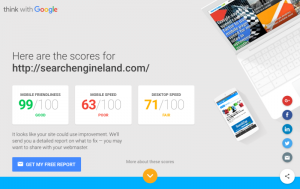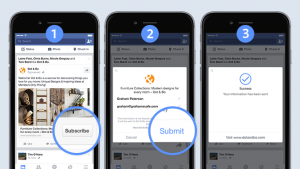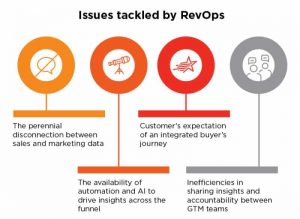
Do you ever get the feeling that your marketing content is falling on deaf ears?
You finely tune the strategy, digging in to understand what’s going on in your market and the pain points driving your customers. You come up with a killer idea for a campaign. It’s all hands on deck during the creation phase for your agency, writers and designers – taking up days and sometimes weeks of their time. You’ve got the brick and feathers ready to go. Launch day comes, you hit the “send” button and wait for the overwhelming engagement that’ll keep your team hoppin’ for the next few weeks.
And then…crickets.
It can be a painful exercise for any marketing strategist who has to go back during the post-mortem and figure out the ROI on a campaign like this. It happens to us all, but it doesn’t have to. You need to put the power of data storytelling to work for you to turn that silence into engagement and conversation.
What is Data Storytelling?
Data storytelling is a way to communicate your insights through a combination of data, visualization and narrative. The goal is to influence a business decision, action or purchase.
Think of data storytelling in several ways: focused internally to influence a decision on your team, focused externally to support a client’s decision making or focused on influencing a prospect to take some action (usually become your customer). For the content marketer, we’re likely talking about the latter two goals – a journalistic approach to interpreting data that helps a customer or prospect make a better decision.
At Scribewise we help our clients become data storytellers in two ways: through sharing original data or providing an interpretation of data already available publicly. Both are valid ways to add to a conversation in your market and gain the coveted (if sometimes shopworn) title of “thought leader.”
Share Original Data
Virtually every organization has some original data available for a story, it’s just a matter of mining that data, providing the necessary privacy protections and then figuring out the underlying story. For instance, if you’re using a marketing automation tool, you’ve got data about your customer base you can share.
In other cases, you may want to commission original research. Content like this is something people actually read all the way through vs. just skimming, according to Hubspot.
Buzzsumo published the Five Ways to Create Data-Driven Stories, suggesting that data-backed stories focus on trends, comparisons, rank order, relationships, and surprising or counterintuitive data.
A great example is a stat I included in a story about breast cancer we told for one of our clients. Eighty percent of women diagnosed with breast cancer have NO family history of breast cancer. Apparently, it’s one of the biggest misunderstandings that cancer surgeons deal with all the time: “I can’t have breast cancer, no one in my family does.” Data like that can really help make a story.
Provide Original Interpretation
If you don’t have original research on hand, there is a ton of publicly available data just waiting for interpretation.
SPARK Movement used this strategy to great effect when they analyzed Google Doodles from 2010-2013 and found that 62 percent featured white men, 17 percent were women, and four percent were of women of color. Not only did the story get a lot of traction, but Google’s team took notice and intensified their commitment to diversifying the doodle program.
At Scribewise, we told another story for a client recently about the health of the data science industry, a topic particularly important to what they do. We went to LinkedIn and found data about how many data scientists are currently on the network, and how many data science jobs are currently being advertised. The takeaway: there are more jobs available for people who know how to tell stories with data than there are people to fill those jobs. That’s a winning headline right there.
A Few Additional Tips
Be transparent: Remember, there needs to be a journalistic aspect to your data storytelling. Yes, you’re trying to influence a decision, but you need to do it in a credible way that builds trust with your audience. Cite sources and provide details on research methodology.
Be focused: Sometimes you’re releasing a large survey with a significant amount of data points. Instead of throwing the kitchen sink at your audience, break it into digestible chunks. Tell stories about one or two stats at a time, which will be easier for your audience to understand and also helps you get more mileage from your data.
Don’t forget the story: Data is great, but the story is the essential part of the equation. Stanford professor Chip Heath, who wrote Made to Stick, found that 63 percent of people could remember a story, but only five percent could remember a stat they read. So tell the story with the stats.
Business & Finance Articles on Business 2 Community(71)
Report Post





